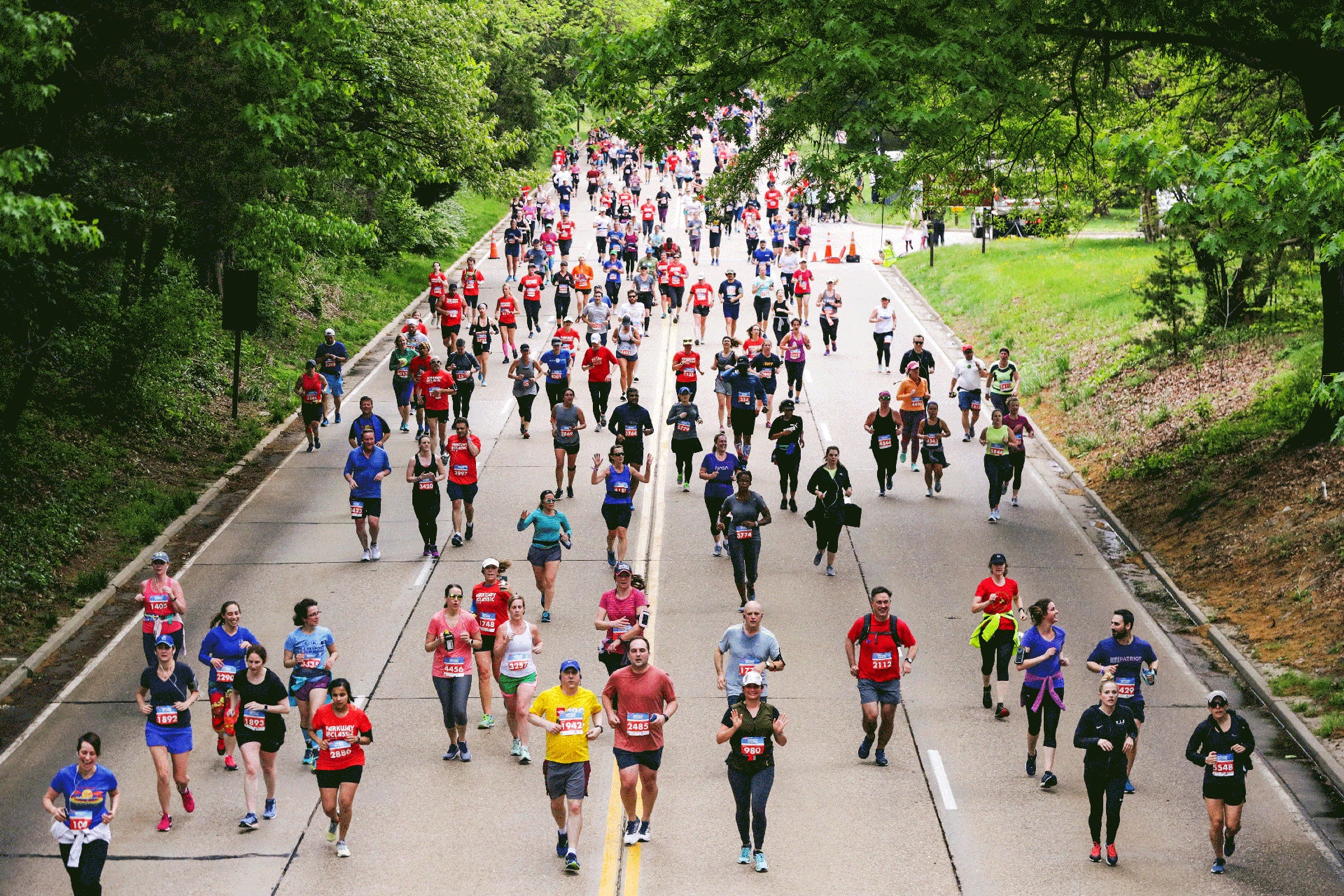Preparing for a running a race doesn't take long, but it's a very important to make sure that you equip yourself for success and safety. Read about the race gear that you should bring to 5k races, 10k races, half marathons and marathons.
Race day is almost here. Where did all the time go? It seems like only yesterday your goal race was months away. Now you’re packing your bag and laying out an outfit on your bed to post on Instagram.
While this checklist will help ensure you have everything you need for a comfortable and stress-free racing experience, it’s still a good idea to lay out your outfit and pack your bag a few days before the race. You’re going to forget things on your first pass, and it’s better to remember them two days before the race than when you’re handing your bag over to gear check.
Some of the items listed below might not be applicable for all race distances and weather conditions, so use your best judgment. For example, you probably don’t need energy gels for a 5k and you might not need sunglasses for a night-time race. That said, in most instances it’s better to overpack and not need something than underpack and realize you left something you need at home.
One important note before we get into specific items: If you’re flying to your race, make sure to pack everything you need on race day in your carry-on bag. That way, if your checked luggage gets lost, it is only a normal inconvenience instead of something that threatens to throw off your entire race plan.
Race-day essentials
- Gear check bag
- Shoes
- Racing bib
- Bottoms
- Tops
- Sports bra
- Socks
- Hydration and food
- Anti-chafing gear
Gear check bag: If your race has a gear check, make sure you know where it is and how it works. Will there be a place to store your wallet and car keys while you run? Is there a limit to the amount of stuff you can check? Most large races will have a gear check or bag drop, but it’s always better to double check. Read through the race website ahead of time so you’re not scrambling to find the perfect hiding spot for your things when you should be getting to the start line.
Shoes: Obviously you need shoes to run, and if you’ve made it this far, you have shoes that work well for you. But are those the shoes you should wear for your race? The answer to that question depends on the runner, and we’ve addressed it at length elsewhere. The short answer, though, is that if you’re going to be chasing a time goal on race day, you could benefit from shoes designed for racing. If your goal is to finish, you’re probably fine with what you’ve worn in training.
Racing bib: If you want to be allowed to race, have your time recorded, and most importantly, get that shiny medal when you cross the finish line, you need to have your race bib. It can be easy to forget a piece of paper amid the stress of race morning, so play it safe: As soon as you get back from packet pickup, pin it to the top you’re going to wear for the race. You’re unlikely to forget your shirt, so now you won’t forget your bib either.
Bottoms: You’ll be using your legs a lot during the race, so you want something that feels good. Make sure you’ve run in your shorts or tights before race day. You don’t want to spend the entire race pulling up – or pulling down – ill-fitting bottoms.
Tops: Whether you opt for a tank top or a t-shirt, your race-day shirt should be light and comfy. If you have friends and family out of the course cheering you on, let them know what you’ll be wearing so they can spot you from a ways away.
Sports bra: You already know the importance of a sports bra that fits, but we’ll say it again: Get fitted for a sports bra! Any running store should be able to help you here.
Socks: There’s nothing worse than getting a blister in the middle of a race, derailing months of training. So, get a good pair of moisture-wicking socks!
Hydration and fueling: Check the race website to see what will be available on course. Most marathons will have water and fuel stations along the course, while shorter races – 10 miles and under – often will not. Either way, it can be a good idea to bring along a handheld water bottle and a stash of a few gels. Aid stations can get crowded, so you might find it easier to steer clear of the jostling and do your own thing.
Anti-chafing: Once more for leaving nothing to chance. Especially for a half marathon or marathon, get yourself some Body Glide and put it wherever you think chafing or blisters could occur – feet, thighs, armpits, nipples, etc. That post-race brunch won’t be much fun if you can’t walk or wear a shirt without experiencing a constant burning sensation.
Nice-to-haves
- GPS watch
- Warm gloves and hat
- Sunglasses
- Hat
- Sunscreen
- Headphones
GPS watch: Not every race is great with placing mile markers and clocks on the course. If you’re the sort of person who is constantly fretting over your pace or how far you have to go – if you’re a runner, in other words – a GPS watch can take a ton of stress out of your race.
Warm gloves and hat: Because most races start early in the morning, it may be chilly on the start line and through the first few miles. Bring a hat and gloves that you won’t mind throwing to the side as the weather warms up. A cheap pair of cotton socks works well as gloves for this purpose!
Sunglasses: Aside from, you know, training, nothing will help you run faster than knowing you look good on race day. There’s no easier way to look good than with a pair of Goodr sunglasses. They’re all polarized and no-slip, so you won’t lose your secret weapon along the way.
Hat: Whether you’re looking to keep the sun from beating down on your head or keep the rain out of your eyes, a simple running hat can be an essential part of your race-day wardrobe.
Sunscreen: Between the starting corral, the race itself, and the finishers’ festival, you’re going to be out in the sun for a good chunk of the day. Just because you’re not lounging on the beach doesn’t mean you don’t need to protect your skin.
Headphones: Some events don’t allow runners to use headphones due to safety concerns, so make sure to check the race website to see if you can use them. If they are allowed, the Shokz OpenRun headphones use bone-conduction technology to allow you listen to your tunes while remaining aware of your surroundings. Remember to put your playlist together the night before.
Ideas for extreme weather
After days of obsessively refreshing the forecast for race day, you’ve concluded that the weather is not shaping up to be great. Understandably, you may be starting to freak out a little bit. Don’t. With the right gear, you can have a good time in almost any conditions Mother Nature throws your way.
Another packing tip: The weather is notoriously fickle, so always plan for the worst-case scenario. You’ll be happier having a warm hat or a rain jacket in your bag that you never have to wear than arriving at the start with nothing to do when it suddenly starts pouring rain.
Rain gear
If you’ve followed the checklist above, you should be well-prepared with head-to-toe moisture-wicking gear and Body Glide to keep the chafing away.
If it’s really going to be pouring, you might consider a lightweight windbreaker or rain jacket. A few brands make rain jackets that can be packed into a pouch the size of your fist, so you don’t have to throw aside your fancy new jacket if it stops raining halfway through your race.
Heat gear
Hydration is the name of the game here. Not only do you want to start the race hydrated, you’ll need to stay hydrated throughout. Definitely carry a water bottle and consider a hydration pack if you know you’ll be going through a lot of water.
You’ll also want to keep the sun off of you as much as possible, so grab a hat. Pro tip: You can also pour water on the hat at fuel stops, which will help cool you down in the middle of the race!
Cold gear
The key here is layers. Most races start early in the morning, so it’s likely to get less cold – if not downright warm – over the course of your race. You’re likely going to shed layers throughout the race – especially if it’s a longer one.
No matter how cold it is, you’re still going to sweat, so don’t skimp on keeping moisture-wicking fabrics close to your skin. On top of your baselayer, you can start stacking light layers that you don’t mind leaving on the course, because you’ll likely end up being warmer than you expect. The less you like your outermost layers, the more likely you’ll be to listen to your body and cut those clothes loose when it’s time.









